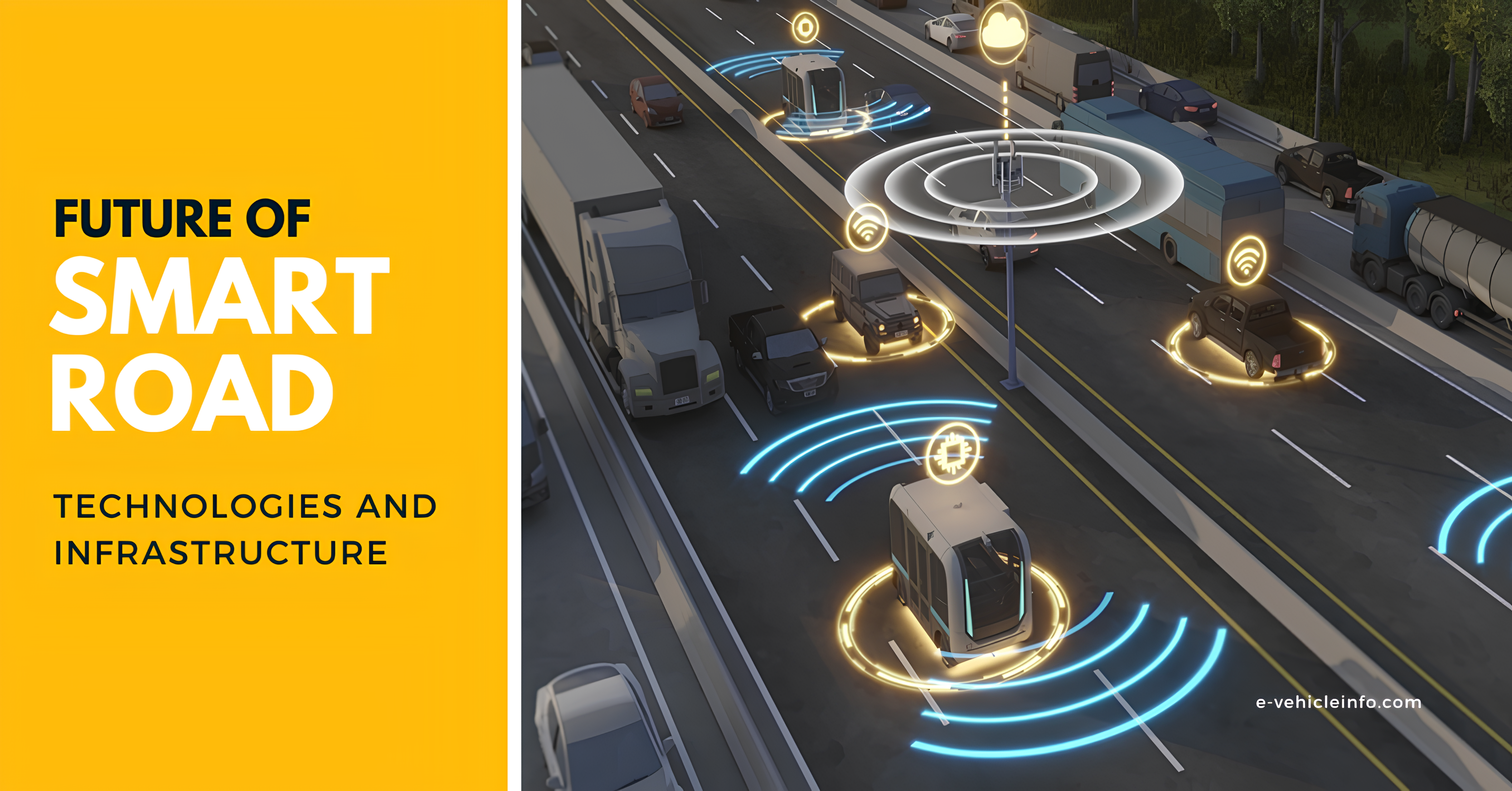
“A Bend In The Road Is Not The End Of The Road, Unless You Fail To Make The Turn.”
Helen Keller
The history of roads is as old as the history of the evolution of human beings. The day primitive people left their caves, roads began to form. With time they became more structured & started taking formal shapes. With the invention of wheels, the movement started spreading over larger areas and for longer distances. To improve travel conditions, innovations like plantation of trees on both sides of the road for shades, making of rest houses along the routes for people to break their journeys started appearing along the roads. However with the rise of Automobiles in early 1900, brought a dramatic shift in the whole mobility world, including the road system which was the most integral part of this revolution.
Of many technical factors behind the development of smart cities like connectivity, cloud computing, data analytics, sensors, Internet of Things, and artificial intelligence which will impact transport, health, and living, we shall be focusing here on one part of a most critical segment of smart cities i.e. roads – focusing on the advancements happening on-road technologies making them smart, a true compatible system for new-age mobility network of a future, not so far off.
Table of Contents
Smart Road Technologies
Even though over the years society has seen dramatic changes in the technologies of mobility world and also an exponential increase in the number of vehicles on the road which has led to multiple traffic problems and associated risks e.g. more accidents & frequent traffic congestion, etc., yet the roads, despite being arteries of modern societies and economies, are still commonly viewed as a classical civil and structural engineering construction. However, several technological innovations have been made over the past few decades to challenge this perception and address the current challenges of the existing road network.
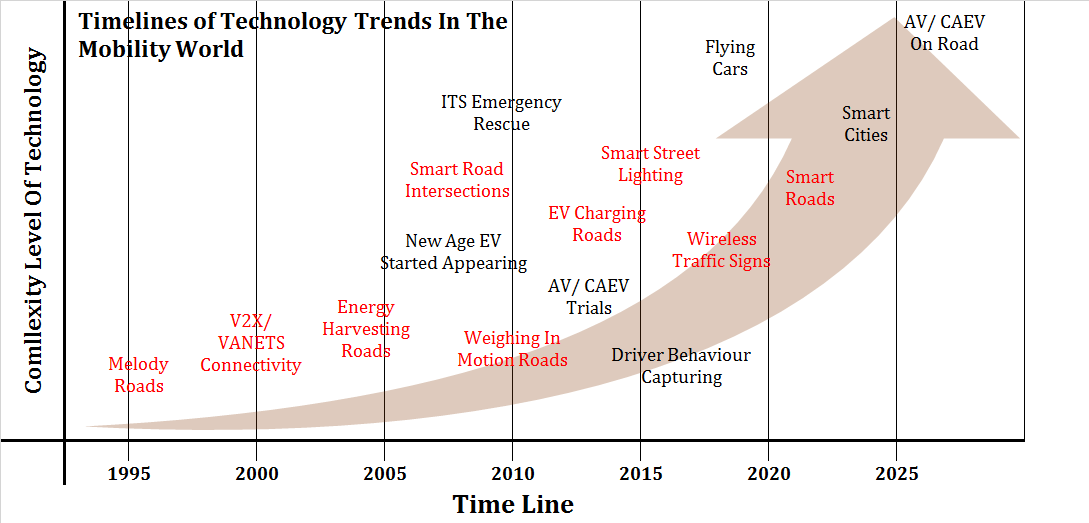
The technology trend for road construction is now moving to make these roads sensitive to their surrounding by embedding various sensors in these roads and developing a road network system that is utilized more effectively & efficiently. This new-age road system could easily merge with futuristic smart cities forming an integral part of them. The new road designs are being envisaged by seamlessly merging modern cutting edge technologies involving all kinds of sensors, microprocessors chips, and high-end electronics in conventional technologies of road construction and then integrating them with a centralized server. With such developments, the present conventional roads are finally becoming smart to communicate with their surroundings, with other vehicles moving on it, harnessing energies maintain constant communication with a central server, updating the information on a real-time basis. This kind of detailed real-time updated information will be very useful to improve the current traffic situation, be it road congestion, haphazard traffic flow, to quickly attend to accidents and/or handling situations like a stampede, to track and control traffic rule violation. Using artificial intelligence (AI), this information can also be utilized for adaptive traffic lights and to integrate various roadways for smooth traffic flow. Such a large amount of data can also be used for long-term analysis for monitoring & improving the road conditions on one end to reduce CO2 emissions on another extreme.
The world is entering an era where the “information superhighways” (connectivity, Internet, and data grid) would be merging with the “physical transportation highways-the roads” to make the “roads live & intelligent” which at present are “dead & dumb”. Let us now try to capture some of the advancements in road technologies in the recent past, by embedding electronics to make them smart, intelligent, responsive, and communicative as well as applying technologies to harvest energies from solar radiation/ vehicle movement. Although these advances only address few specific problems in the present mobility system, it is expected that as more technologies evolve with time and get merged with the existing ones, they would be creating a completely new mobility eco-system of the future in which these smart, intelligent, connected & communicative roads will be playing a much bigger, important & critical role.
| New Road Technologies | |||
| 1 | Roads Which Talk To Surroundings (VANETS*/V2???) | 6 | Roads Which Weigh The Vehicles in Motion |
| 2 | Musical Roads For Human Safety | 7 | Road To Detect Traffic Violations |
| 3 | Roads With Wireless Digital Traffic Signs | 8 | Roads To Harvest Energy & Charge EVs While In Motion |
| 4 | Roads With Smart Intersections | ||
| 5 | Roads With Fast Emergency Rescue | 9 | Road With Smart Street Lights |
| (*) A Vehicular Ad hoc Network (VANET) is a group of moving or stationary vehicles connected by a wireless network primarily used for providing safety and comfort to drivers in vehicular environments. | |||
| (V2? Could be anything from V2X, V2P, V2I, V2H, V2N,V2V | |||
Roads Which Talk To Surrounding
Mobile networks have penetrated the vehicular space with vehicle-to-vehicle communications capability (V2V). However, Communications from vehicle to any roadside infrastructure is termed as V2I while V2X refers to communications from the vehicle to any other object. V2X is important because it allows vehicles and objects to communicate and exchange crucial information, be it position, identity, state of physical presence or speed information. With such data, vehicles can be alerted about potential upcoming traffic hazards, avoiding accidents and enhancing safety for road users.
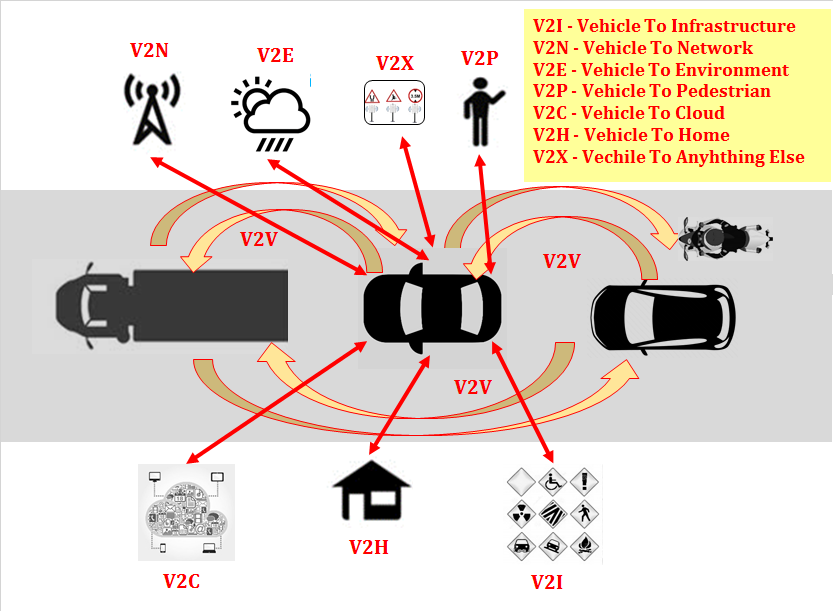
Musical Roads
These roads are designed to produce music or tunes when vehicles drive passed them at a set speed. Countries like Japan, USA, Denmark, Netherlands, Taiwan and South Korea have constructed few of such roads using grooves or rumble strips, which are spaced at specific intervals on the road surface, forming the tones of the music generated. The primary purpose of these musical roads is to warn the driver for the hazard, make them aware of road safety and help them to maintain the speed limit. However, such music from the roads can be disturbing to residents living nearby at nights, hence their use has been restricted or are used particularly used on highways and long country roads, to serve as a reminder of their driving speed.
| Some of The Musial Road In The Various Countries | |
| Japan | About 30 Melody Roads, Located In Hokkaido, Hiroshima, Shizuoka, Oita, Gunman, Etc. |
| Korea | “Mary Had A Little Lamb” Melody Is Used For Warning Drivers On Highways |
| Taiwan | Vehicles Driving At 50 kmph On Kinmens’s “Dinglin Road”, Generate A Tune Of “The Olive Tree” Where Anti-Slip Strips Are Used Instead Of Permanently Cutting Grooves On Road Surfaces. |
| Denmark | In 1995, Danish Artists Invented The “Asphaltophone”, Raised Pavement Markers That Produce Tones To Keep Drivers Awake And Observe The Speed Limit |
| Netherlands | In Leeuwarden, Road Play Out A Tune of The Friesland’s Regional Anthem At 40 Mph Speed Limit Of |
| USA | The Song “America The Beautiful” Can Be Heard By Drivers At Speed Limit Of 45 mph On New Mexico-On Historic Route 66 Between Albuquerque And Tijeras |
| Lancaster, CA | A Snippet Of “William Tell Overture” Plays For Drivers At 55 mph. |
Wireless Digital Traffic Signs
The roads signs have been in existence and use for a long time yet the main challenges with these signs have been on their proper placement for people to read them and take necessary actions. There are over 110 road signs in India, 60 in the USA, and 170 in the UK, making it very difficult for any driver to understand them to leave aside remember them. The new technology allows the embedding of programmable chips in the smart signposts which may be remotely connected to a centralized Traffic Management System from where the message can be broadcasted wirelessly to on-coming traffic, apart from physically displaying these signs. A receiver unit residing in the vehicle then picks up the sign signal and alerts the driver. Simultaneously another set of signals can be fed to the vehicle from analyzed cloud data based on collated data of many other such vehicles on the road to ensure that the right action command has been received by the vehicle/ driver to take his call. This would eliminate the need for the driver to keep watching out for the signs while driving & will offer multiple advantages like eliminating the dependency on the driver’s judgment in analyzing various traffic signs (becomes critical during bad weather/ low visibility/ night time/ blockage etc.) and also the attention of the driver is not diverted in watching out for the signs. Also being programmable, changing a sign becomes more flexible with a much bigger advantage that, unlike image processing programs, this does not require highly complex image processing algorithms and can be easily used for the automatic computation of traffic volume.
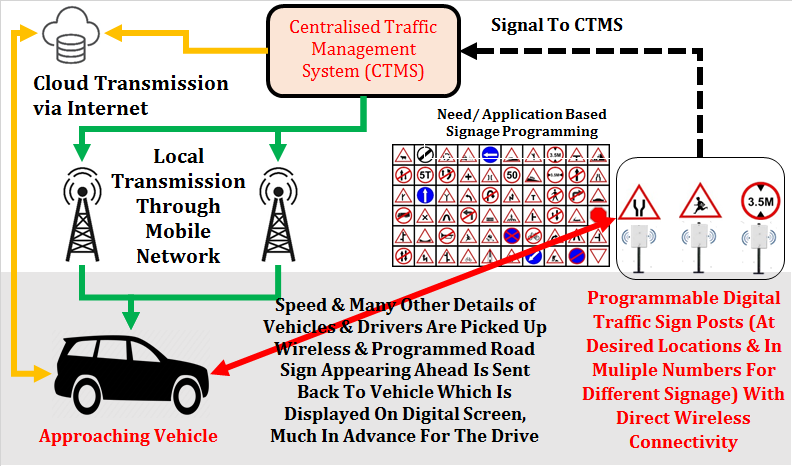
Roads with Smart Intersections
Road intersections are prone to accidents due to blind spots, unexpected jumping of lights & the obstruction of views of vehicles coming from different directions. This lead to the evolution of technologies for the smart intersection where multiple sensors are used for each crossroads along with the vehicle’s V2X (X stands for any object in surrounding of vehicle like parked vehicles, moving vehicles, buildings, dividers, light poles, and pedestrians, etc.) connectivity and real-time mapping of situation is created and projected to the vehicle/ driver to provide information for him to take a timely & right judgment. In another scenario using AI, these smart intersections can be made to understand traffic densities, roadways situation and dynamically adjust traffic signal timing of various intersections to optimize the traffic movement.
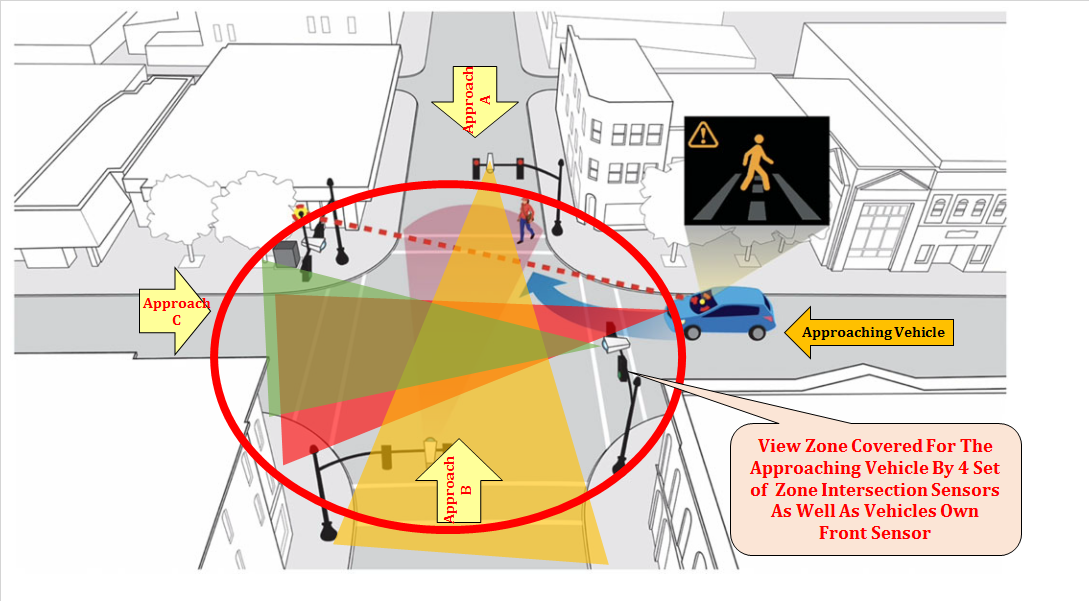
With Fast Emergency Rescue
Road accidents are one the most critical issue which appeared & have risen with rise of automobiles on the roads. As per WHO every year approximately 1.3 million people die in road accidents and approximately 20 and 50 million more people suffer from some kind of physical disabilities due to these accidents. The trends below shows the trend of rad accidents & related deaths in India, one of the highest in the world. In the case of any accident the “golden hour” is most important which is the time elapsed between the accident and the arrival at the hospital. If we can reduce this time, injured persons can have a greater chance of survival as well as reduce the severity of their injuries. With smart road & various connectivity of vehicles on road (V2I, V2N, V2E, V2P, V2C, V2H), this time can certainly be reduces as automatic crash notification alerts with geo-location can be sent to all agencies involved to handle the case.
| Golden Hour In An Accident | Road Accidents & Related Deaths Trend In India |
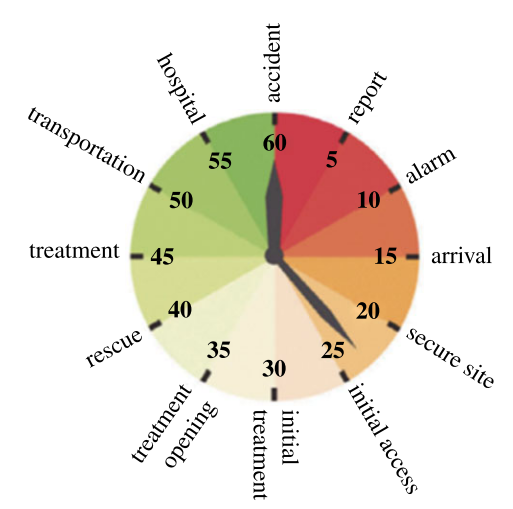 | 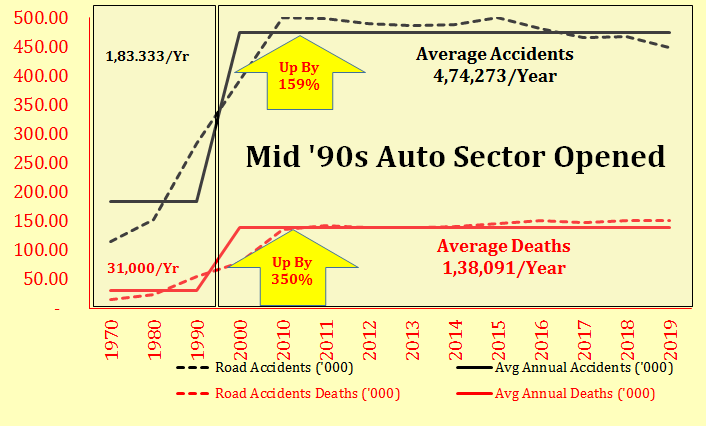 |
On Road Weighing of The Vehicles
With in-built weighting sensors mounted in these smart roads the weighing of the various transportation goods carriers can be weighed while they are in motion (WIM-Weighing In Motion) to avoid a potential hazard on the roads due to overloading as well as wastage of waiting time at weigh-bridges. In WIM, multiple sensors are installed in one or more traffic lanes and measurement of axle loading as well vehicle loading along with many other interrelated parameters are captured in real-time while the vehicle remains in motion.
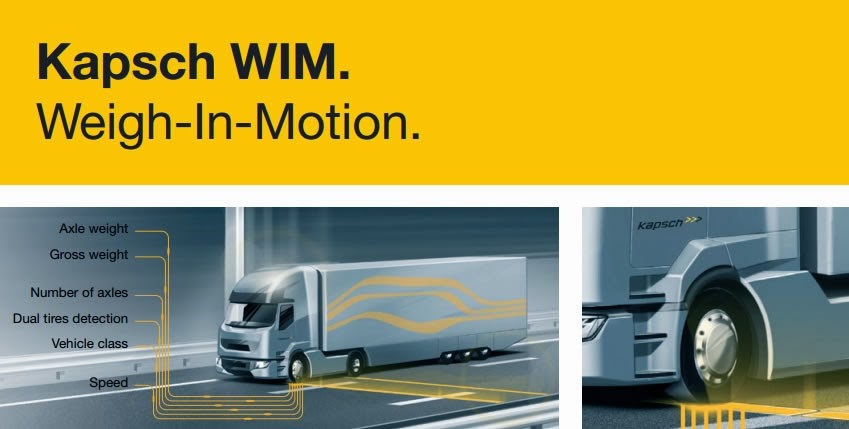
Traffic Violations
When roads become smart with multiple connectivities with vehicles traditional methods of detecting traffic violations may become obsolete since the vehicles connected with these smart roads will constantly be connected and communicating with each other as well as with the Centralized Traffic Management System making it easier to track any violation. The programs can be built to create necessary alarms in case of any deviation.
Harvest Energy & Charging of Electric Vehicles
The two factors make roads highly attractive for energy harvesting – first they have a large surface area open to solar radiation and second due to the constant movement of vehicles there is a lot of dissipation of kinetic & frictional energy on them. For harvesting solar energy heavy-duty & rugged photovoltaic modules are placed directly on top of road surfaces (these roads are known as Solar Roads), while to harvest kinetic & frictional energies from vehicular movement piezoelectric devices are placed below the road surface to generate electrical energy (these roads are known as “piezoelectric roads”).
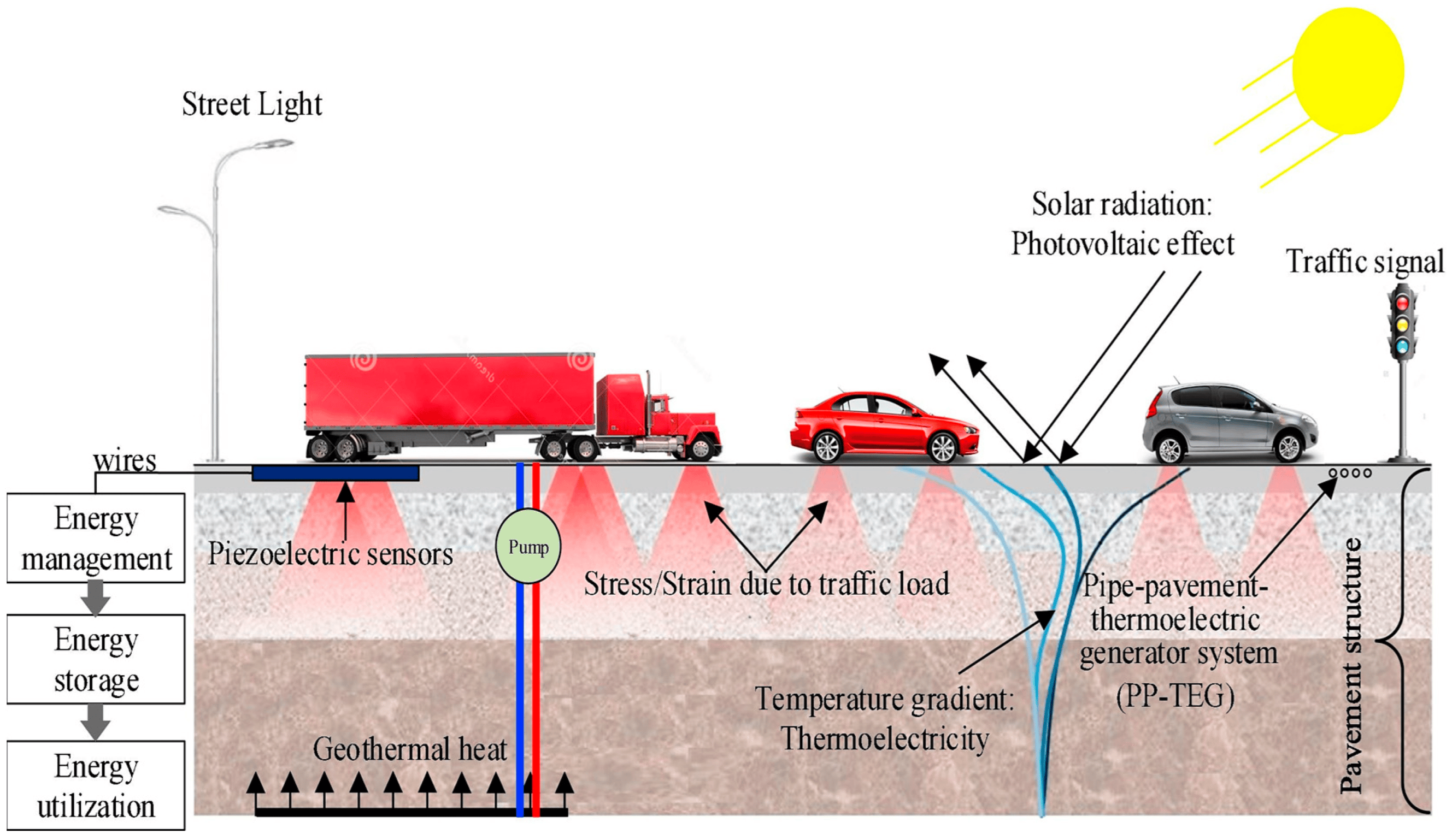
With the rise of EVs which need to be recharged at regular intervals which often becomes difficult for want of a charging station, especially in the rural areas or on expressways. Hence need for making roads suitable for charging the EVs arose while they are traveling on the road. In 2016, the very first such solar road consisting of 2,880 m2 of solar panels, was made in France, and the power generated by this solar road was used to power all street lights. Later USA, Sweden, China, UK & Japan followed the suit who developed various road stretches which are underperformance trials.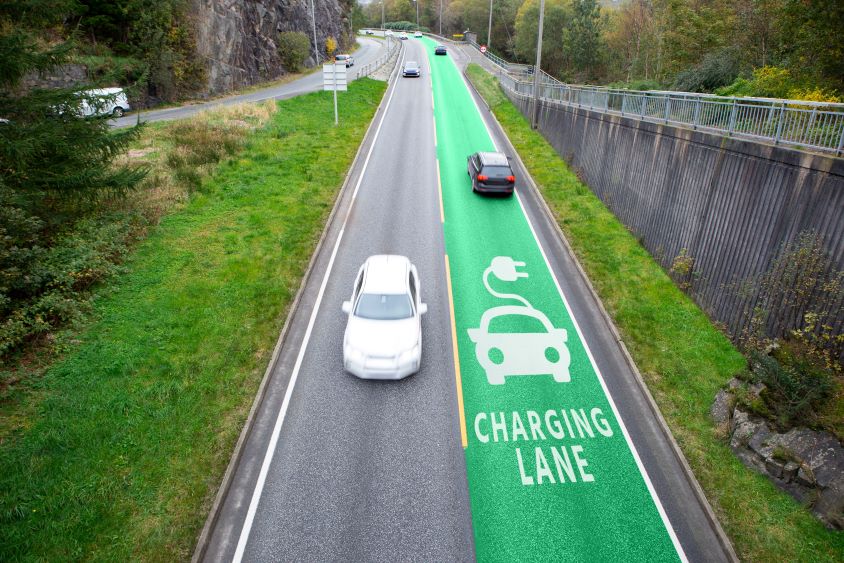
While France leads in Solar Road, Sweden created a stretch of 1.2 miles of road near Stockholm into an “electrified road” which dynamically recharges the vehicles while they move on the road using magnetic induction technology by having cables buried underneath the road surface & generating electromagnetic fields strong enough to be received by a receiver device in the vehicle, transforming it into electrical power & charging the onboard battery.
Roads with Smart Lighting
The first road with smart/ intelligent street lighting system was deployed in Oslo, Norway in 2006 with a purpose to control the optimizing the street lighting based on daylight, weather conditions & traffic/ movement to save energy. Most street lights today have now been replaced with LEDs, Sensors and Wi-Fi are also being added to street lights control unit to allow them to sense the presence of pedestrians and traffic, in order to turn on and off the street lights only when needed while maintaining minimum illumination for social safety (i.e. on-demand lighting). Wireless connectivity has allowed street lights to be connected, enabling them to form networks, and allowing them to be controlled remotely or tandem forming pairs or groups based on the need.
| Smart Road Lighting | |
 |  |
| Some Other Typical Attributed To Smart Roads | |
| Environmental Integration | Focus On Co-Modality |
| Energy Efficiency | Carriers Of Multiple Services |
| Service Quality & Reliability | User-Friendly Roads |
| Economic Sustainability | Safety & Comfort |
Indian Scenario & Challenges
Having missed the technology boom and more importantly the Great automobile boom post WWII, in the formative years, India could never focus on revamping its age old road & related infrastructure. Though the need & requirement of better road & infrastructure started brewing since 1980s when India got its first new age automobile in the form of tiny Maruti 800 (in collaboration with Suzuki Motor Co. of Japan) yet the real improvement in roads & infrastructure picked up momentum around 1995 when automobile market was opened up and people started getting the feel of best of global automobiles.
| Increase In Road Length/ Sq.KM Area – India |
 |
However, despite the best efforts by all stakeholders in infrastructure creation, it is worth noting that while India might be ranking global second (next to the USA) in terms of absolute length of road terms, it lags far being in terms of quality (only 69% of India’s roads are surfaced which too do not stand anywhere near global benchmarks), and design of the roads. Generally, the roads in India have never been treated with respect in all the aspects – from designing, to creation to their usage. They are one of the most abused infrastructures and face challenges from urbanization, massive traffic flow/ overloading, and public misuse. The whole combination makes any movement on the Indian road network a nightmare for anyone. The nation’s road primitive network, despite its impressive length, is far away from even achieving the tag of smartness. Indian Government, engineers, infrastructure creators, who have been focusing on creating so many smart cities across the country, must also think about the making new/converting present road (which will be the arteries of these future cities) into smart & intelligent roads so these roads merge seamlessly with these futuristic smart cities. This is also needed as with the continuous rise in the number of conventional ICEVs as well as EVs, these road networks, if the name matched by making them smart & intelligent, will become a most critical factor (bottleneck) affecting the performance whole functionality of smart cities.
| Top 20 Countries With Largest Road Lengths | Top 20 Countries With No. Of Vehicles/ KM of Road |
 | 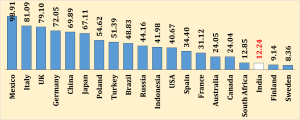 |
| Top 20 Countries With Road Density (KM/ Sq. KM of Area) | Top 20 Countries With No. Of Vehicle/ Per Person |
 | 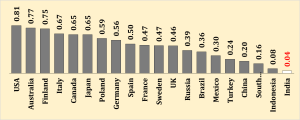 |
| To move to smart & intelligent roads even in a smaller way, India faces tremendous challenges India is taking smaller steps one by one to begin its journey. In its very first attempt an Indian team from HP Lubricants and Leo Burnett India, has put a set of proto type “SmartLife” poles on NH1 (one of the most dangerous roads in the world & which connecting Jammu and Srinagar). These poles installed on the two side of hairpin bends, gauge the speed of approaching vehicles & communicate with each other to alert both the drivers by sounding a horn. | “Road That Honks” On NH1 of India Connecting Jammu and Srinagar |
| The World’s First Anti-Collision Vehicle Management System For Dangerous Hairpin Bends | |
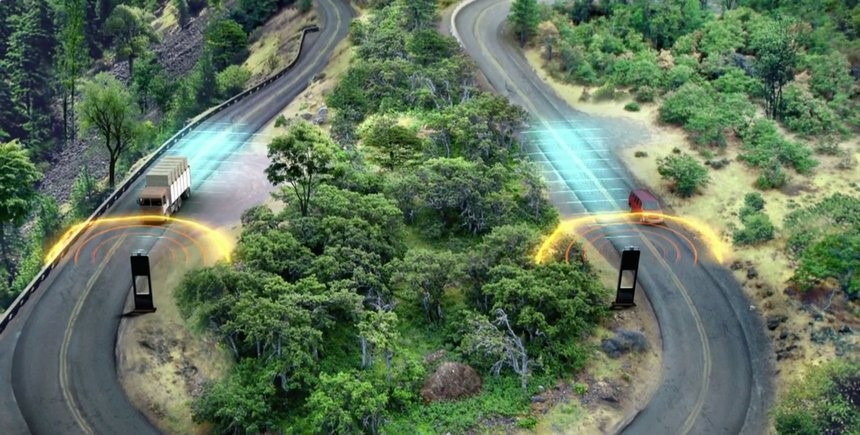 |
However, modernizing the Indian roads is a herculean task for the government & may take years but it is certainly one of the high priority subjects. The time is right when India is investing heavily in infrastructure development in which the creation of smart roads with cutting-edge technologies could be easily merged. This would help India to make a leapfrog and catch up with the rest of the world. Also since India already has an ambitious target of converting 70% of all commercial cars, 30% of private cars, 40% of buses, and 80% of 2W/ 3W sales to EVs by 2030, the current road plan, as well as future road plans, must be made considering this fact in mind as smart roads would certainly be the requirements of matching the needs of future automobiles and other mobility systems which need to get integrated seamlessly with smart roads of future.
Epilogue
Though the road technology in India has grown very slowly compared to other components of mobility networks with GOI’s focus on building world-class infrastructure, coupled with the rise of demands of EVs, the time is perfectly matched for this most critical sub-system of mobility network to become smart. This is going bring about greater automation, higher energy efficiency, lower cost, improved safety, cleaner air, greener environment, less traffic congestion, fewer accidents and fatalities, and hence improving the overall quality of lives for people.
The roads should no longer be viewed as static infrastructures but rather a “dynamic & intelligent sub-system” of society, which should be able to sense its surroundings, operations, conditions and be responsive to the various situations. It should be able to communicate in real-time with the central server for providing a regular update about traffic conditions, road loading, weather conditions over the whole span of its stretch, accidents, and its exact location, to name a few but the possibility are unlimited making city operations efficient & smooth.
Probably in the futuristic cities, “the information grid”, “the electric grid” & “the transportation grid” will blend to form a live neural system for the smart cities in which Central Control Room would be serving as the “Brain” while these smart roads grids may act as its “central nerves system”, while the EVs/CAEVs (forming Transportation Grids) may serve as “hands and legs” and information/ power flow would be the “blood flowing” in this virtual eco-system a real smart city – alive and kicking.






